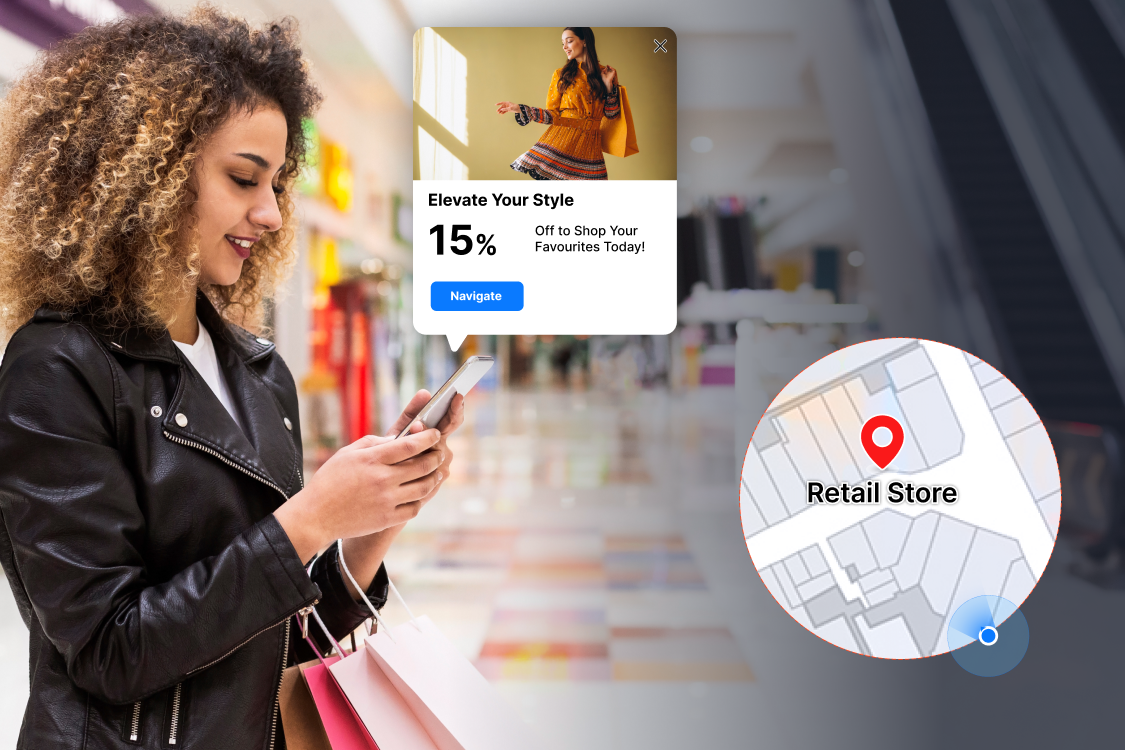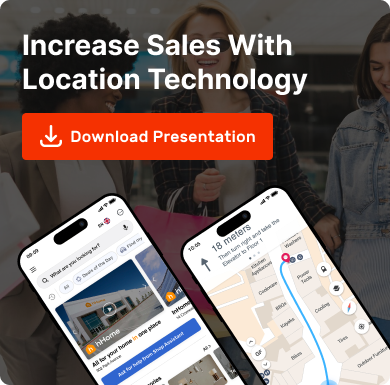Big Box Retail & Malls

Malls have always been the venues for new connections and shopping, memories are made here. However, with e-commerce making things extremely convenient, malls recently had to reconsider their customer interaction strategy. Now, to me, geofencing in retail is the hero of this space because, with it, brick-and-mortar retailers can align themselves against online market players.
How Geofencing Is Changing the Future of Retail? It has transformed the experience at malls so that no matter where you are, every visit to a mall can seem as tailored and driven.
What is Geofencing in Retail?
Geofencing is a technology that uses virtual boundaries set on real-world physical areas, either malls or stores. Whenever someone enters the defined area, goes out of this zone or stays in, actions can be triggered. This usually includes sending push notifications, offers or reminders to shoppers based on the location they are in. For retailers, geofencing connects the dots between online and offline by making customer experiences frictionless and immersive.


The growing significance of this technology is also reflected in the global geofencing market. In 2022, it was valued at $1.95 billion and is expected to grow by a CAGR of 21.7% between the years of 2023 and 2030. It demonstrates how quickly geofencing is becoming a digital transformation in the retail industry and a mainstay for retailers and malls.
In 2022, it was valued at $1.95 billion and is expected to grow by a CAGR of 21.7% between the years of 2023 and 2030.
How Geofencing Works in Shopping Malls
Geofencing uses GPS, Wi-Fi or Bluetooth to establish virtual boundaries. Those who sign up via one of many channels—apps, Wi-Fi connections, loyalty programs, for example—become part of the geofencing universe. Here’s how it plays out:
- Attracting Visitors: Nearby notifications bring in mobile shoppers. Like, “Come by today and get 25 percent off at your favourite store.” These little pushes are all it takes for malls to compete with the immediate pleasure of discounts online. This is one of the biggest benefits of geofencing for retailers.
- Contextualized Offers: Once in-store, geofencing provides notifications to shoppers. “You’re near the food court—$5 off all the combos!” or “Today only—20% off every accent piece… in-store only—flash sale for the next hour.” This approach is similar to geofencing marketing in e-commerce but in a physical space, making it more engaging for shoppers.
- More Practical Convenience: Geofencing is not only a sales tool but also a handy tool. Geofencing is also used by some malls, like Nordstrom, to locate parking spots or even help customers locate their cars. It is one of the easiest but most convenient methods and a key example of digital transformation in retail.
- Customer Insights: Retailers can study foot traffic patterns with the help of geofencing. Shops can find out what areas are most popular and what advertising campaigns do the best in order to optimize layouts and marketing efforts. These insights reinforce the benefits of geofencing for retailers.
- Customer Loyalty: A reminder that you are more than a sale (birthday discounts or invites to be amongst the VIPs). Through immediate and personalized rewards, geofencing helps retailers improve customer experience and loyalty. This technology is vital in today’s digital transformation in the retail industry.
Benefits of Geofencing for Retailers
1. Higher Engagement and More Foot Traffic
It is pretty crucial that you engage with customers at the right time and right place! CTRs are significantly higher because of geofencing in retail. In fact, geofenced audiences enjoy a CTR of 7.5% on average versus the industry-wide CTR of 0.9% for Facebook ads. This means more people are walking through mall doors and through shop doors, showcasing how geofencing is changing the future of retail.
2. Higher Conversion Rates
You have an active interest in those passively interested in geofencing marketing in e-commerce to become the purchaser. If a shopper is given a discount on an item that he or she was already planning to buy, then the chances of buying are far higher. These personalized notifications also make the shopping experience more dynamic and interactive, emphasizing the benefits of geofencing for retailers.
3. Valuable Customer Data
Insights are created about customer interactions with every geofence. This allows retailers to study what types of promotions work well and peak shopping periods. This data-based method is an example of digital transformation in the retail industry, as it can optimize operations and, consequently, ROI.
4. Reasonable Capital Allocation
For high-end establishments like malls, geofencing in retail can help in close-to-real-time staffing of areas because data-based recommendations using foot traffic data are available. If management finds that a particular wing is busy on weekends, they can schedule the staff accordingly and ensure better service. This optimization underscores the benefits of geofencing for retailers in driving efficiency.
5. Building Long-Term Loyalty
Geofencing builds loyalty with the personalized experience of coupons or event access. Customers feel like they are being valued, showcasing what geofencing in retail is at its best. This reinforces their bond with the brand and promotes additional visits.
Geofencing in Action: Real-World Examples
1. Hyper-Targeted Deals
A mall generates geofences around each of its stores and uses this data to send personalized discounts. Example: A shopper who hovers near a jewelry store might get a message saying 10% off their next purchase. It gives the experience a sense of purpose and personalization, demonstrating how geofencing is changing the future of retail.
2. Dynamic Navigation
Big malls have somewhat of a maze-like feel Geofencing, paired with navigation technology, is made simple to guide customers to where they need to go. Whether it’s a specific shop or the exit, this functionality saves every kind of trouble and improves customer experience. This use of geofencing in retail makes analytical sense and signifies the process of digital transformation in retail at work.
3. Live Event Updates
For example, with geofencing marketing in e-commerce and retail, you can send notifications to the customers who are around during an event, such as product launches or seasonal sales. Shoppers remain informed and engaged with live updates.
Digital Transformation in Retail Industry: Geofencing’s Role
The digital transformation in the retail industry is driven by geofencing. It bridges the gap between shopping online but still gives you that tactile, immersive experience of in-store shopping. It would let retailers connect loyalty programs with the in-store experience. Through a mobile app, for example, the customer can see personalized offers based on previous purchases or browsing patterns—an example of digital and physical shopping converging.
In fact, retailers are now also using geofencing in retail for geo-conquesting, targeting customers around the stores of their competitors. For example, send a “Better deal here!” notification when someone walks near a competitor and brings them to your store instead. It helps retailers to enjoy a competitive advantage while providing more options for the customers.
Why Mapsted Stands Out
If anyone is looking to try out a geofencing solution, then Mapsted is one of them. With over 100 patents, Mapsted is a leader in hardware-free geofencing technology. Unlike other systems, Mapsted’s geofencing does not need Bluetooth beacons or external Wi-Fi. This means zero maintenance or installation expenses, just quick targeting and effective plays.
It provides the most accurate 1–5 meters accuracy, which is ideal for geofencing in retail marketing. Mapsted enables hyper-targeted messaging and data-rich insights from user interaction so retailers can interact with customers more directly. Depending on your goal—be it increasing footfall, enabling personalized experiences or beating competitors through geo-conquesting—the different solutions that Mapsted offers are simple and effective.
Challenges to Address
Geofencing is not without its shortcomings and challenges—here are a few that need to be dealt with in order to make the most of it:
- Privacy Concerns: Customers have never been more aware of data privacy. Transparent use of the data and clear opt-in policies are necessary.
- Too Many Notifications: Sending excessive notifications may irritate your customer. Playing ball frequently isn’t bad, but if you reach the end of that line, it’s not good either!
- Requires Customer Opt-In: Geofencing relies on customers choosing to opt-in through app checks or Wi-Fi. Providing incentives, such as exclusive offers, can motivate participation.
Final Thoughts
Retail geofencing goes beyond sending messages. The goal is to shrink the convenience gap between physical shopping and digital channels, giving personal, relevant engagement.
This technology goes beyond just attracting footfall for malls and stores, it transforms the manner in which customers interact with the place. Whether you agree with how geofencing is changing the future of retail, retailers that are embracing geofencing today can rest assured of loving their long-term play—connecting more effectively to customers.
When you are ready to take advantage of geofencing, Mapsted can help you do it with a proven solution that does not require any hardware. Contact us today to find out how geofencing can transform customer experiences whilst improving your bottom line.
